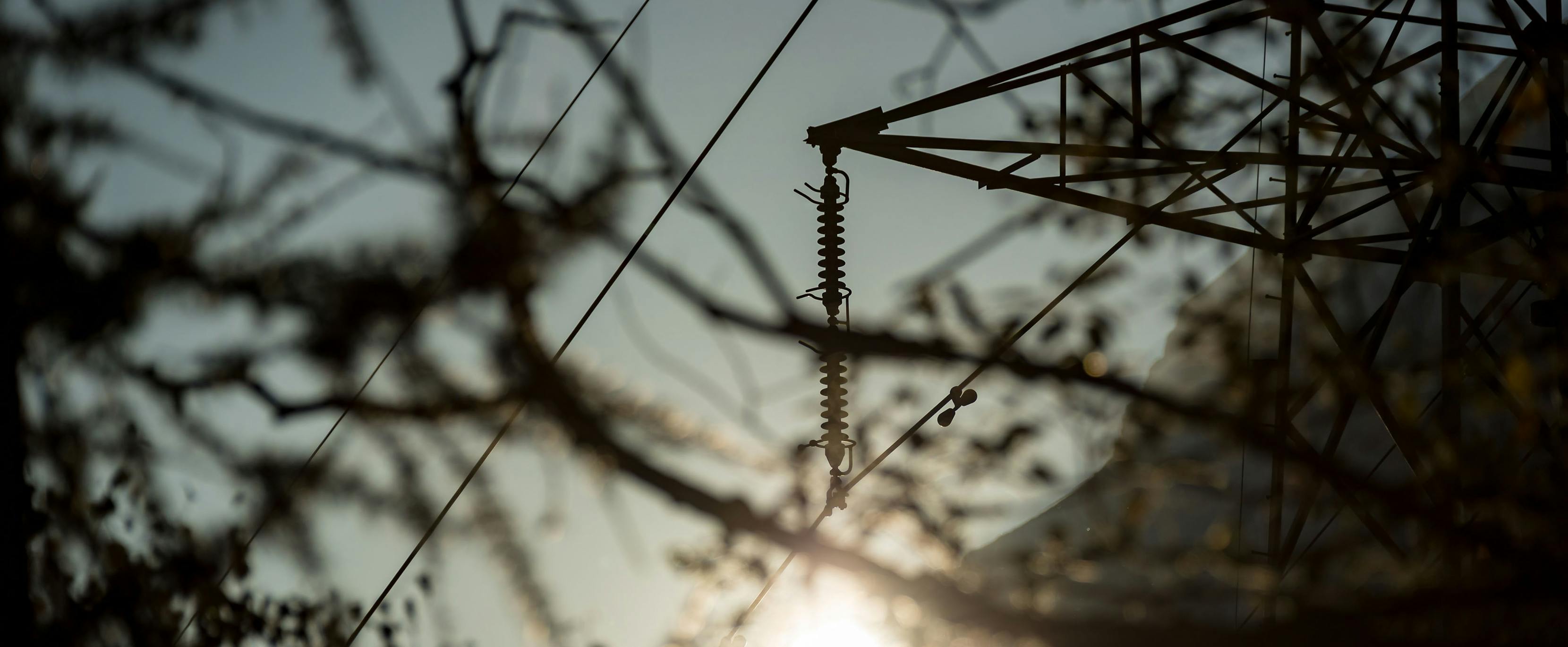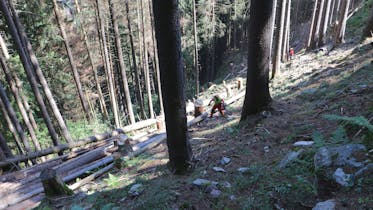2019 Maintenance

Sepp turns off the chainsaw, flips up his visor and wipes the sweat from his forehead with the back of his hand. The terrain above Gurtnellen in the canton of Uri is steep, the work is tough and dangerous. Sepp is one of the employees of the Uri Süd forestry operation, which works together with Swissgrid to clear the forest of trees infested with bark beetle. This is essential given the raging beetle plague. He has just finished delimbing one of the trees and has climbed back up to the path. For safety reasons, Sepp has to block the path and stop any hikers as his two colleagues are already felling the next tree.
There is also time for a brief chat with Bruno Kempf. Bruno is one of six foresters at Swissgrid who are responsible for maintaining the forest and vegetation along the extra-high-voltage lines. Reports from visual inspections and aerial photographs allow Bruno and his colleagues to identify where trees are growing too close to the power lines. Together with the local forest rangers, they mark the trees to be felled and commission external forestry companies to carry out the work.
Bruno’s area of responsibility extends across a large area that stretches from the Rhine in the north down to the Gotthard. Today he is working in Central Switzerland. Mission: Beetle-infested wood. The trees affected by bark beetle are easy to identify: their brown colour stands out clearly in the midst of the healthy, green spruces.
This beetle population does not pose a direct risk to the 220 kV extra-high-voltage line between Göschenen and Plattischachen located nearby explains Bruno Kempf.
There is also the risk that the beetles will infect the next trees causing the damage to spread and, in the worst case, even get out of control.
The work not only facilitates the subsequent clearing along the power line, its primary aim is to preserve the entire forest. After all, the forest protects the population from natural hazards, such as avalanches, rockfalls and landslides and is therefore critical.
This requires a huge amount of effort. To protect the living trees, the felled timber must be quickly removed from the forest. Otherwise the bark beetle uses it as a breeding ground and its spread continues unchecked. But removing the trees is difficult in this steep and inaccessible terrain. Their removal by helicopter is often the only option. Swissgrid supports the forestry authorities in caring for the forest and shares part of the costs.
It is by far not the only place with a beetle infestation. The winter storm Burglind uprooted a huge number of trees in the forests and therefore created ideal breeding sites for the bark beetle. The forestry operations were barely able to keep up with the removal of this «beetle-infested wood». The persistent dry period in the hot summer of 2018 as well as in the hot June and July of 2019 also weakened large numbers of trees. The beetle population, however, exploded thanks to the warm temperatures. So the work is not likely to end any time soon. In response to the question of whether this year is a bad one with the beetles, Sepp’s answer is just one word: «Absolutely.» There’s nothing more to say. He reopens the path, climbs down to the felled tree, starts-up his chainsaw and starts delimbing.





